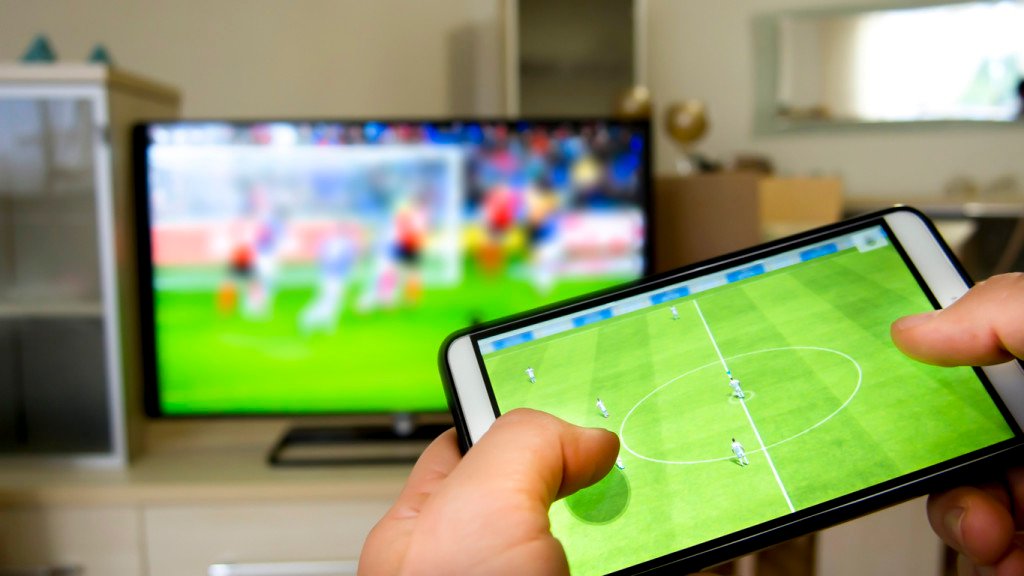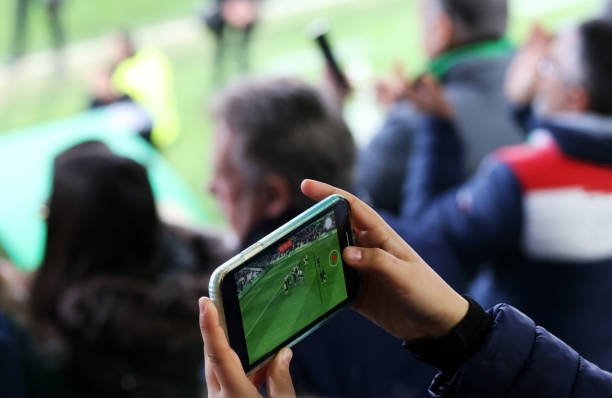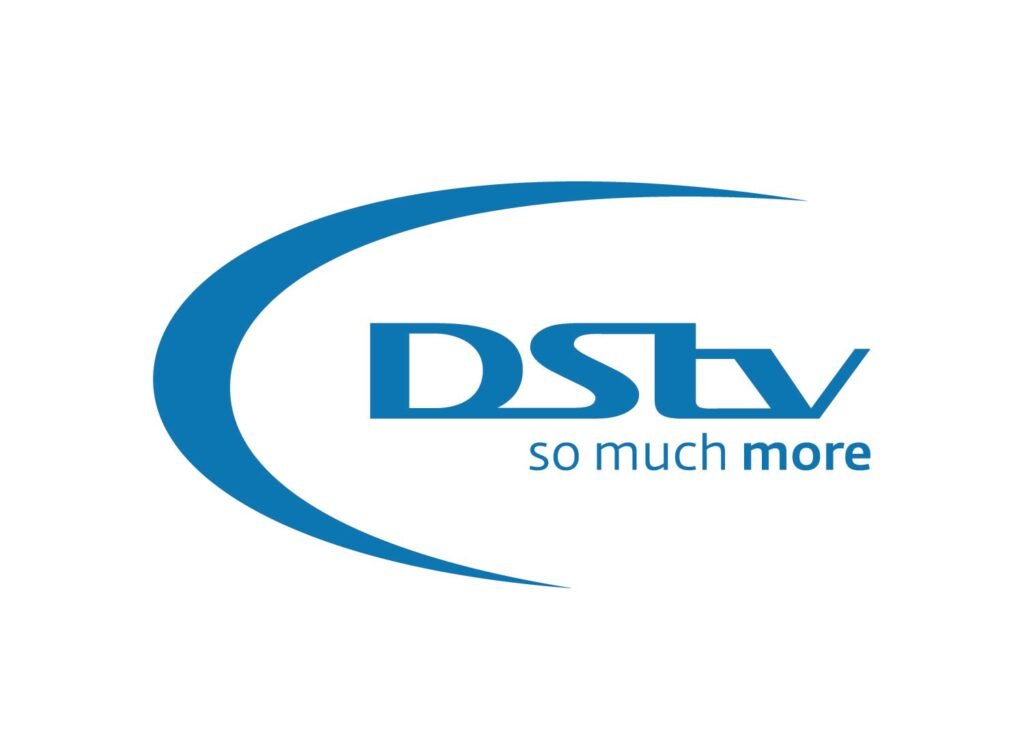Watching live sports is exciting, but it can use a lot of internet data. If you have a limited data plan or a slow connection, streaming games can quickly eat up your data or cause buffering problems. That’s why learning how to stream live sports on low data is important. It helps you enjoy your favorite matches without worrying about using too much data or facing constant interruptions.
In this guide, we will explain what low data streaming means and share easy tips and tools to help you watch live sports without using a lot of data. Whether you use mobile data or have a slow internet connection at home, these tips will make your streaming smoother and more affordable.
What Is Low Data Streaming and How Does It Work?
Low data streaming means watching videos or live sports using less internet data than usual. Normally, streaming a live game can use a lot of data because of high video quality like HD or 4K. Low data streaming reduces the amount of data needed by lowering the video quality or using smarter technology to compress the video.
How does it work? Streaming services use a process called video compression. This technology shrinks the size of the video file while trying to keep the picture clear enough to enjoy. When you choose low data streaming, the video quality might be lower—like switching from HD to standard definition—but it still shows the game in real time.
This helps people with limited data plans or slow internet connections watch sports without running out of data or facing long buffering times. Low data streaming is a good balance between saving data and enjoying live sports.
How to Stream Live Sports on Low Data Without Losing Quality
Watching live sports on low data doesn’t mean you have to sacrifice the fun of a clear picture. You can enjoy the game and save data by following these smart steps:
1. Adjust Video Quality Settings
Most streaming platforms let you choose the video quality. Instead of streaming in full HD or 4K, select 480p or 360p. These lower resolutions use much less data but still show the game clearly enough to follow the action.
2. Use Data Saver or Low Data Mode
Some streaming apps have a data saver or low data mode option. Turn this on to automatically reduce data use by lowering video quality and limiting background data.
3. Download Highlights or Replays Instead of Watching Live
If you don’t need to watch the game live, download match highlights or replays in advance. These videos are usually shorter and can be saved at a lower quality to save data.
4. Use Wi-Fi Whenever Possible
Streaming on Wi-Fi instead of mobile data helps you save your data plan. If Wi-Fi is slow, try moving closer to your router for a stronger signal and smoother streaming.
5. Close Other Apps and Devices Using Data
Limit the number of apps or devices connected to your network while streaming. This frees up bandwidth, helping your video load faster with less buffering.
6. Choose Streaming Platforms with Efficient Compression
Some platforms are better at compressing video to save data without losing much quality. Apps like YouTube, ESPN+, and DAZN often offer good low data streaming options.
By combining these tips, you can enjoy live sports with less data usage and fewer interruptions, making your viewing experience both smooth and affordable.
Best Apps and Platforms for Low Data Sports Streaming
When you want to watch live sports but need to save data, choosing the right app or platform can make a big difference. Some streaming services use better technology to reduce data use while still giving you a clear picture. Here are some of the best options for low data sports streaming:
1. YouTube
YouTube offers flexible video quality settings. You can easily switch to lower resolutions like 360p or 480p to save data while watching live sports or highlights. It’s free and works on almost any device.
2. ESPN+
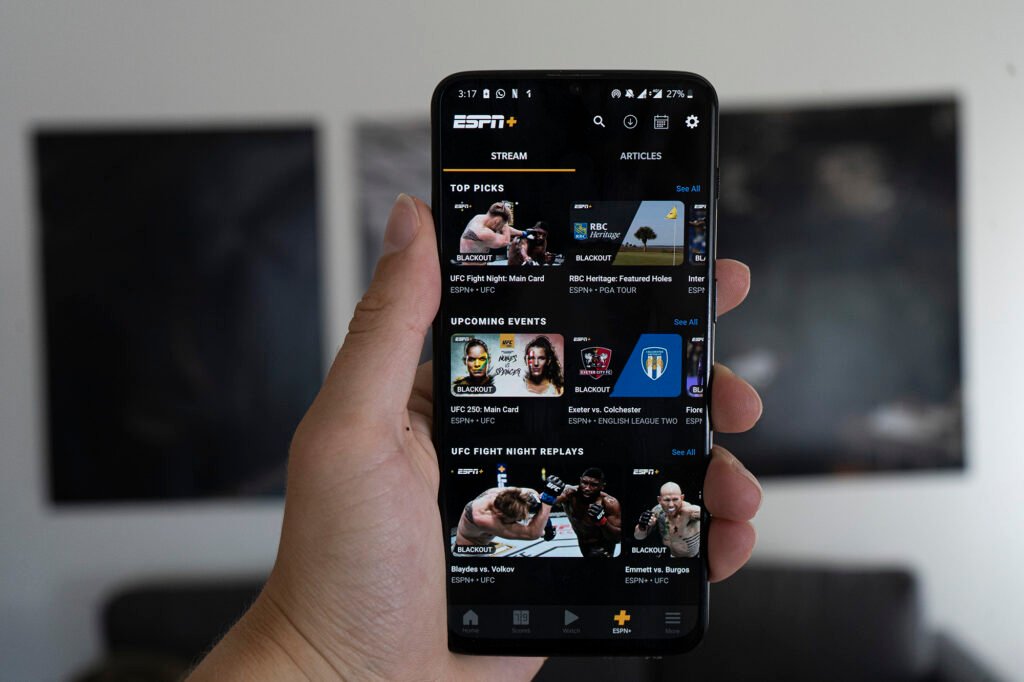
ESPN+ is a popular sports streaming service with good video compression. It allows you to adjust video quality settings to use less data while still enjoying a smooth live sports experience. It covers a wide range of sports, including soccer, basketball, and more.
3. DAZN
DAZN is known for its efficient streaming technology that balances quality and data use. You can watch many sports live, including boxing and soccer, and choose lower video quality options to save data.
4. Sling TV
Sling TV offers live sports streaming with options to adjust video quality. It’s a great choice for viewers with limited data plans who want access to many sports channels.
5. Hotstar (Disney+ Hotstar)
Hotstar provides live sports streaming with adjustable video quality, perfect for watching cricket, soccer, and other sports on low data. It’s widely used in countries with slower internet speeds.
By choosing any of these apps or platforms and using their data-saving settings, you can enjoy live sports without worrying about running out of data or experiencing buffering.
How to Reduce Data Usage While Watching Live Sports
Streaming live sports can quickly eat up your internet data, especially if you’re using mobile data or have a limited plan. Luckily, there are easy ways to reduce your data usage without missing any of the action. Here are some practical tips to help you watch live sports while saving data:
1. Lower Your Video Quality Settings
Most streaming apps let you choose video quality. Selecting 360p or 480p uses much less data compared to HD or 4K. Although the picture won’t be ultra-sharp, it will still be clear enough to follow the game.
2. Use Wi-Fi Instead of Mobile Data
Whenever possible, connect to Wi-Fi instead of using your mobile data. Wi-Fi usually offers more data and faster speeds, so you can stream without worrying about limits or extra charges.
3. Limit Background Data Usage
Close other apps or downloads on your device that may be using data in the background. This frees up bandwidth for your sports stream and helps reduce overall data consumption.
4. Enable Data Saver Modes
Some streaming services and smartphones offer a data saver mode. Turn this on to reduce data usage by lowering video quality and limiting background data from apps.
5. Avoid Watching on Multiple Devices at Once
Streaming on several devices at the same time can quickly use up data. Try to limit live sports viewing to one device, especially if you have a limited data plan.
6. Download Highlights or Match Recaps
Instead of watching full live games, consider downloading shorter highlight videos or recaps when you are on Wi-Fi. These use less data and still keep you up to date with the important moments.
By following these tips, you can enjoy your favorite live sports matches while keeping your data usage under control.
Can You Stream Live Sports on Mobile Data Without Using Too Much Data?
Yes, you can stream live sports on mobile data without using too much data, but it requires some smart choices and settings. Mobile data plans often have limits, so it’s important to manage how much data you use while enjoying your favorite games.
How to Stream Live Sports on Mobile Data Efficiently
- Choose Lower Video Quality
Streaming at lower resolutions like 360p or 480p can reduce your data use by up to 70% compared to HD. This means you get a good picture without quickly using all your data. - Use Data Saver Features
Many streaming apps and smartphones have data saver options. These automatically adjust video quality and reduce background data, helping you watch longer without overusing your plan. - Monitor Your Data Usage
Keep an eye on your mobile data through your phone’s settings or your carrier’s app. This helps you avoid surprise overages and adjust your streaming habits accordingly. - Connect to Wi-Fi When Possible
Even if you mainly use mobile data, try to watch big games or longer matches on Wi-Fi to save data for when you really need it. - Limit Streaming Time
If your data is limited, consider watching only key parts of the match, like the second half or highlights, rather than the full game.
How Much Data Does Streaming Use?
- Streaming live sports in 480p typically uses about 500 MB to 1 GB per hour.
- Streaming in 720p or HD can use 1.5 to 3 GB per hour or more.
- Streaming in 4K uses even more, usually over 7 GB per hour.
Knowing this helps you plan how much mobile data to allocate for sports streaming.
By managing your video quality and data usage, you can enjoy live sports on mobile data without quickly running out of your data allowance.
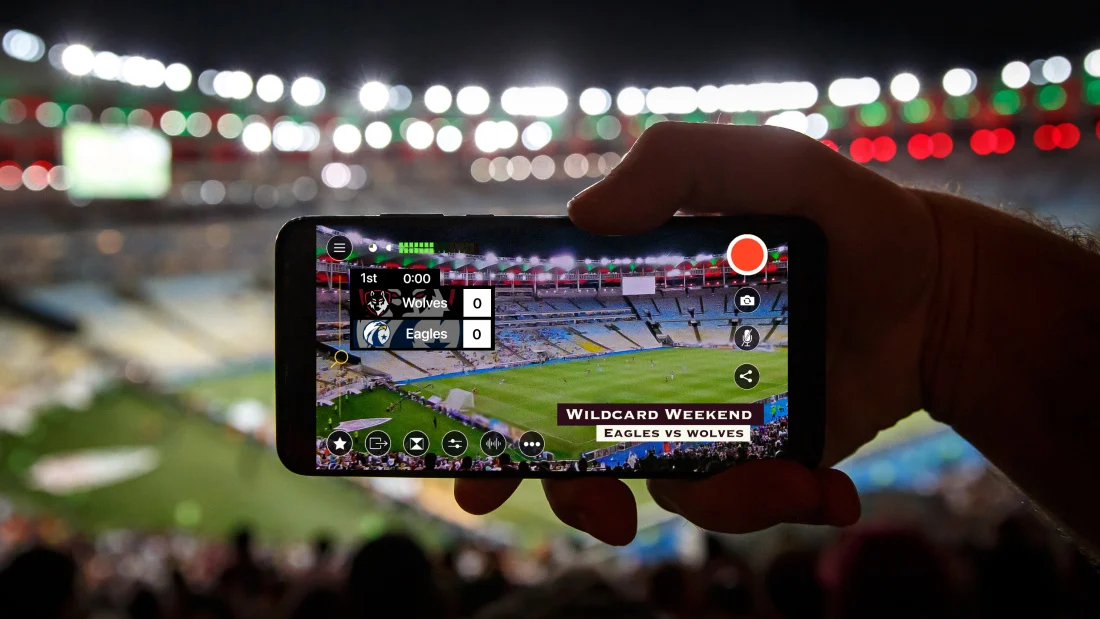
What Video Quality Settings Are Best for Low Data Streaming?
Choosing the right video quality is one of the easiest ways to save data while streaming live sports. Different quality settings use different amounts of data, so picking the best option helps you balance watching the game clearly and saving your data.
Common Video Quality Options
- 240p: This is the lowest quality setting. It uses very little data (about 200 MB per hour) but the picture may be blurry and details hard to see. Best if you have a very limited data plan or slow internet.
- 360p: A step up from 240p, this resolution offers a clearer picture and uses about 300 to 500 MB per hour. It’s a good choice if you want to save data but still see the game clearly.
- 480p (Standard Definition): This is often the best balance between quality and data use. It uses about 500 MB to 1 GB per hour and offers decent picture quality that is good enough for most live sports.
- 720p (HD): High Definition provides a sharp, clear image but uses more data—about 1.5 to 3 GB per hour. Choose this only if you have a large data plan or are on unlimited Wi-Fi.
- 1080p (Full HD) and above: These use the most data and are not recommended for low data streaming.
Best Settings for Low Data Streaming
For most people wanting to save data, 480p is the best setting. It gives a clear picture without using too much data. If your connection is slower or your data plan is very limited, 360p is a good alternative.
Always check your streaming app’s quality settings before starting the game. Many apps let you switch quality during the stream, so you can lower it if you notice buffering or high data use.
Best VPNs for Streaming Live Sports on Low Data
Using a VPN (Virtual Private Network) can help you access live sports streams that might be restricted in your location, protect your privacy, and sometimes improve streaming speeds by avoiding throttling by your internet provider. For streaming live sports on low data, it’s important to choose VPNs that offer fast, reliable connections with strong security and optimized servers.
Here are three of the best VPNs for this purpose:
1. ExpressVPN

Features:
- Over 3,000 servers in 94 countries, offering a wide range of locations to access geo-blocked sports content.
- Lightning-fast speeds suitable for smooth live streaming without buffering.
- Strong AES-256 encryption ensures your data stays secure and private.
- Easy-to-use apps for Windows, Mac, Android, iOS, smart TVs, and routers.
- No-logs policy keeps your activity private.
- Split tunneling feature lets you route only your streaming app through the VPN, saving data on other apps.
- 24/7 customer support via live chat.
Benefits for Low Data Sports Streaming:
ExpressVPN’s fast speeds and stable connections reduce buffering, helping you watch games smoothly even on lower-quality streams that save data. Its large server network lets you access sports streams from many countries, while split tunneling helps optimize data use.
Pros:
- Fast and consistent streaming speeds
- Wide server coverage for easy geo-unblocking
- Strong security and privacy features
- User-friendly apps with split tunneling
- Excellent customer support
Cons:
- Slightly more expensive than some competitors
- Limited to 5 simultaneous device connections per subscription
2. NordVPN

Features:
- More than 5,500 servers in 60 countries, with specialized servers for streaming.
- High-speed servers optimized for smooth video playback.
- Double VPN feature for extra security.
- Strong AES-256 encryption and strict no-logs policy.
- Easy apps for all major devices and platforms.
- CyberSec feature blocks ads and malware, improving streaming experience.
- Supports up to 6 devices at once.
Benefits for Low Data Sports Streaming:
NordVPN’s streaming-optimized servers reduce lag and buffering. The CyberSec feature improves performance by blocking ads and unwanted content, which can consume extra data. High-level security protects your privacy while streaming.
Pros:
- Large and diverse server network
- Fast speeds optimized for streaming
- Ad and malware blocking for smoother streaming
- Strong privacy features
- Supports 6 simultaneous connections
Cons:
- Some servers can be crowded during peak times
- Desktop app can be a bit complex for beginners
3. Surfshark

Features:
- 3,200+ servers in 100 countries, offering wide global access.
- Unlimited simultaneous device connections, great for families or multiple devices.
- Fast and reliable speeds suitable for live sports streaming.
- AES-256 encryption with a strict no-logs policy.
- CleanWeb feature blocks ads, trackers, and malware.
- User-friendly apps across all platforms.
- Affordable pricing with frequent discounts.
Benefits for Low Data Sports Streaming:
Surfshark lets you connect as many devices as you want without extra cost, so you can stream on your phone, tablet, and smart TV all at once. Its CleanWeb feature blocks ads that may use extra data, helping save bandwidth. Fast speeds and broad server locations make it easy to access streams worldwide.
Pros:
- Unlimited device connections
- Affordable pricing and frequent deals
- Good speeds for smooth streaming
- Ad and malware blocking
- Easy-to-use apps
Cons:
- Smaller server network than NordVPN
- Some servers less consistent in speed
| VPN | Pros | Cons |
| ExpressVPN | Fast speeds, wide server coverage, split tunneling, excellent support | More expensive, limited device connections |
| NordVPN | Streaming-optimized servers, ad blocking, strong security, 6 devices | Some crowded servers, complex desktop app |
| Surfshark | Unlimited devices, affordable, ad blocking, user-friendly | Smaller server network, inconsistent speeds on some servers |
Using any of these VPNs will help you enjoy live sports streaming on low data by providing fast, stable connections, access to geo-restricted content, and tools to reduce unnecessary data use.
Tips for Improving Streaming Speed on Low Data Connections
Streaming live sports on a low data connection can sometimes lead to buffering and poor video quality. However, there are several simple steps you can take to improve your streaming speed and enjoy a smoother experience even when your internet is slow or limited:
1. Use a Wired Connection When Possible
If you’re streaming on a desktop or laptop, use an Ethernet cable instead of Wi-Fi. Wired connections are more stable and faster, reducing interruptions and buffering.
2. Connect to a Strong Wi-Fi Signal
If you must use Wi-Fi, make sure you are close to the router with a strong signal. Walls and distance weaken Wi-Fi strength and slow down your connection.
3. Close Unnecessary Apps and Devices
Other apps running on your device or other devices connected to the same network can use bandwidth. Close or pause downloads, streaming, or gaming on other devices to free up data for your live sports stream.
4. Lower Video Quality Settings
Choose a lower video resolution like 360p or 480p to reduce the amount of data needed. This makes the stream load faster and decreases buffering.
5. Clear Cache and Cookies
Over time, your browser or app cache can slow down streaming. Clear cache and cookies regularly to keep your streaming app running smoothly.
6. Use a VPN to Avoid Throttling
Sometimes internet providers slow down (throttle) streaming traffic during peak times. Using a fast, reliable VPN can help bypass throttling and improve streaming speeds.
7. Update Your Streaming App and Device Software
Keeping your apps and device software up to date ensures you have the latest performance improvements and bug fixes for better streaming.
8. Restart Your Router Regularly
Restarting your router can improve internet speed by clearing temporary issues and refreshing your connection.
Following these tips will help you get the best possible streaming speed on low data connections, making your live sports experience more enjoyable and less frustrating.
Is It Safe to Use Data-Saving Apps for Live Sports Streaming?

Many people turn to data-saving apps to help reduce their internet usage while streaming live sports. These apps promise to lower data consumption by compressing videos, blocking ads, or managing background data. But is it safe to use them?
What Are Data-Saving Apps?
Data-saving apps are designed to reduce the amount of data your phone or device uses. They work by compressing images and videos, blocking unwanted ads, or controlling how apps use data in the background. Some popular browsers like Google Chrome and apps like Opera Mini have built-in data-saving modes.
Are Data-Saving Apps Safe?
Generally, yes. Most well-known data-saving apps and browsers are safe to use. They come from trusted developers and do not harm your device or steal your information. Using these apps can also protect you from annoying ads and reduce data use without affecting your streaming too much.
Things to Watch Out For
- Avoid Unknown or Suspicious Apps: Only download data-saving apps from official stores like Google Play or Apple App Store. Avoid apps with poor reviews or unknown developers to prevent malware or privacy risks.
- Permissions: Check what permissions the app requests. Be cautious if a data-saving app asks for unnecessary access to your files or contacts.
- Quality Impact: Data-saving apps may reduce video quality. While this saves data, it might make the live sports stream less clear.
Best Practices
- Use built-in data saver features in trusted browsers and streaming apps.
- Keep your apps updated to get the latest security improvements.
- Pair data-saving apps with a reliable VPN for added privacy and security.
In summary, data-saving apps are generally safe and helpful tools for streaming live sports on low data, as long as you choose reputable apps and use them wisely.
Common Problems When Streaming Sports on Low Data and How to Fix Them
Streaming live sports on low data connections can sometimes cause issues that affect your viewing experience. Knowing the common problems and how to fix them can help you enjoy smoother streams without frustration.
1. Buffering and Lagging
Problem: Your video keeps stopping or freezing because the data connection isn’t fast or stable enough.
Fix:
- Lower the video quality to 360p or 480p to reduce data use.
- Pause the stream for a few minutes to let the video buffer.
- Close other apps or devices that use bandwidth.
- Use a wired connection or move closer to your Wi-Fi router.
2. Poor Video Quality
Problem: The picture is blurry or pixelated due to low bandwidth.
Fix:
- Adjust the streaming quality to the best setting your connection can handle.
- Use apps or platforms that offer better video compression.
- Restart your streaming app or device to refresh the connection.
3. Streaming App Crashes or Freezes
Problem: The app suddenly stops working or freezes during the game.
Fix:
- Update the app to the latest version.
- Clear the app cache in your device settings.
- Restart your device.
- Reinstall the app if problems continue.
4. Slow Loading or Delayed Streams
Problem: The stream takes too long to start or is delayed compared to live TV.
Fix:
- Check your internet speed and switch to a better connection if possible.
- Close background apps using data.
- Restart your router.
- Use a VPN to avoid throttling by your internet provider.
5. Geo-Restrictions Blocking Access
Problem: You can’t access certain live sports streams because they are blocked in your location.
Fix:
- Use a reliable VPN to connect to a country where the stream is available.
- Choose VPNs with fast servers optimized for streaming.
By understanding these common problems and applying the fixes, you can enjoy live sports streaming on low data with fewer interruptions and better quality.
Conclusion
Streaming live sports on low data is possible when you use smart strategies like lowering video quality, choosing the right apps, and managing your connection wisely. Tools such as VPNs can help access more streams while protecting your privacy.
By following simple tips to reduce data use and fix common streaming issues, you can enjoy your favorite games smoothly, even with limited internet. At SoccerForecastToday, we’re committed to helping you stay connected to the action with practical advice and accurate sports predictions to enhance your viewing and betting experience.
